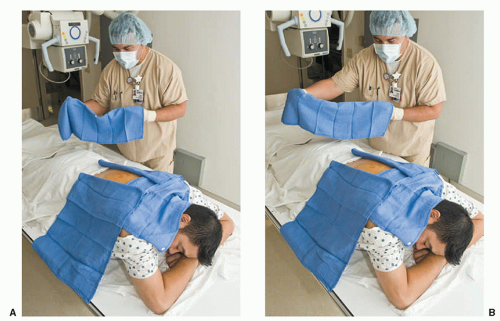
It is important that the tip of the dropper or dropper bottle never touches the eye or eyelid. When corneal anesthesia is required, the patient should be asked to look down so that the cornea will be completely covered by the medication. With the patient’s head tilted back, the dropper, dropper bottle, or ointment tube should be held about half an inch (1.25 cm) from the eye before the release of medication. There is a right and a wrong way to instill eye medication both before and after minor office surgery ( Fig. The fingers and nails should be carefully scrubbed and all hidden recesses of the hands scrupulously cleansed.Įye medication can easily become contaminated by incorrect instillation.

The various antiseptic agents available have their own scrubbing time, which should be followed rigidly. Before scrubbing, the fingernails should be cleansed with an orangewood stick.
#Aseptic technique in surgery skin#
Scrubbing with a brush degerms the hands by the removal of bacteria, and the dilution of the bacteria content is achieved by rinses and the use of antiseptic skin agents that are bactericidal. We tend to use powderless gloves, because particulate matter (e.g., starches) of powder can have a damaging effect in the eye. It is virtually impossible to scrub the hands sufficiently to get rid of all normal inhabitants, but the use of gloves overcomes this handicap. The skin of the hands contains normal bacterial inha-bitants, as well as many transient microorganisms with which the individual may recently have come into contact. In this technique, the tops of the sterile instruments are never touched by hands or laid down in a nonsterile area.

Sodium ethylmercurithiosalicylate + alcoholįor many minor office procedures, scrubbing may be unnecessary if both the operator and the assistant adhere to a “no-touch” technique. Betadine and alcohol are available in large, presoaked swabs. It also may be done by scrupulous scrubbing of the area with hexachlorophene (Phisohex) or green soap. This may be done with careful application by cotton applicators soaked in such solutions as tincture of iodine 2%, povidone-iodine (Betadine), Ioprep, alcohol, and cetrimonium bromide. Office surgery for conditions involving eyelid skin requires carefully applied skin antiseptics ( Table 30.1 spray packs of antiseptics are contraindicated.) Care must be taken that none of the antiseptic material enters the eye. Use of sterile solutions and ointments during and after the operationįor the most part, the following discussion of aseptic technique will be oriented toward ophthalmic surgery in the office.

Sterilization of the hands of both the operator and the assistant Sterilization of the skin adjacent to the operative site Microorganisms that gain access to the interior of the eye can multiply and cause irreparable damage, often resulting in blindness. Ophthalmic surgery demands maximum asepsis, particularly in operations involving the globe itself. Similarly, the current indications for prophylactic antibiotics for these procedures are considered.Aseptic technique in the office or hospital is an attempt to prevent infection by the elimination of microorganisms. In this article we discuss the management of potential sources of infections such as personnel (hand washing, dressing), preparation of the patient, maintenance of a clean surgical environment, sterilization and the use of antiseptic solutions.
.jpg)
The characteristics of the surgical wound (such as involving infected or inflamed tissue or when breaks in the aseptic technique occur), patient characteristics (such as age, comorbidities, medication use and smoking) and procedure factors (such as setting, surgical technique, type of procedure, duration and body region involved). While the patients risk of developing an SSI in dermatologic surgery is low since many of the procedures are considered sterile, there are different factors associated with an increased or decreased risk of developing SSI. Aseptic techniques are those practices designed to reduce the risk of surgical site infection (SSI), defined as such, all those that occur within the first 30 days of the procedure.


 0 kommentar(er)
0 kommentar(er)
